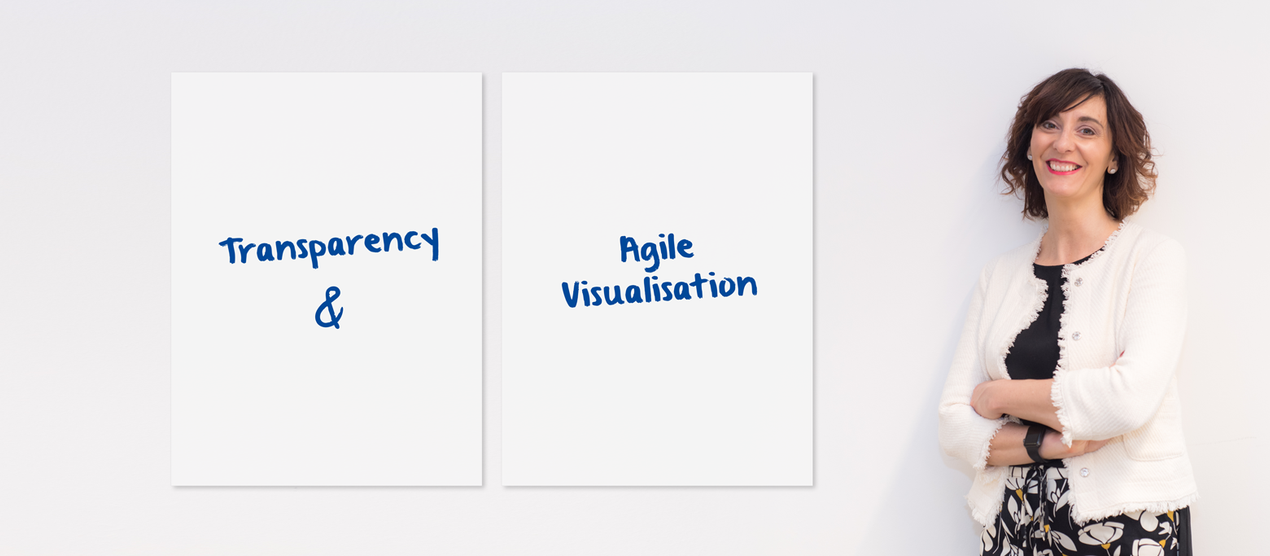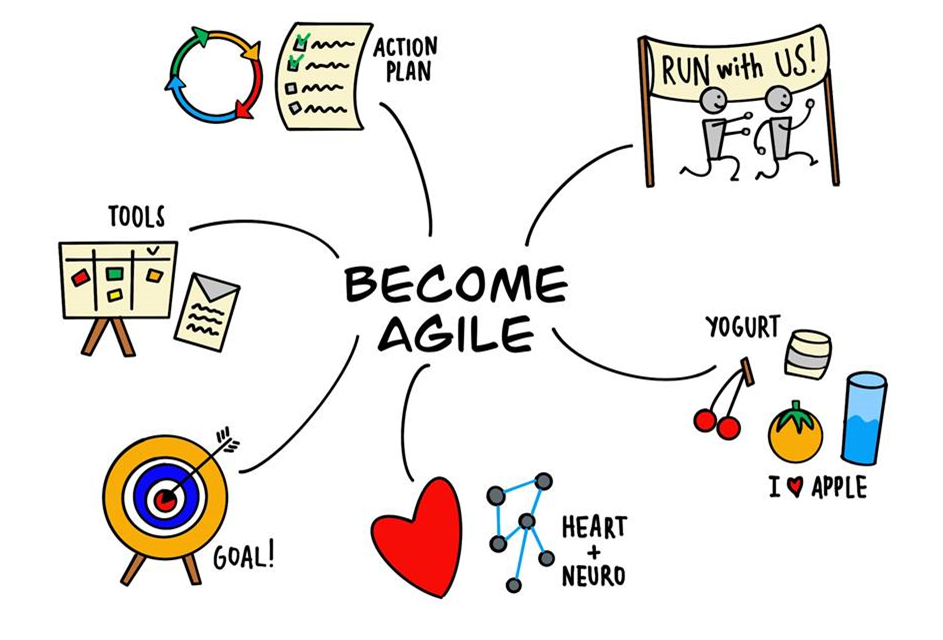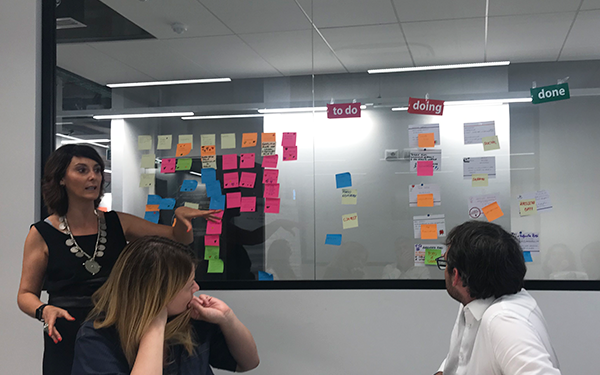
Transparency is considered one of the corner stones of agile organisations. Key aspect in an agile organisation is that multidisciplinary teams are enabled to oversee and implement processes from start to finish. For this, transparency and the visualisation of information are crucial. Teams must be enabled to easily oversee both the content and the status of the team processes, so they can easily judge whether they are on track to meet their goals. To learn more about the power of visualisation in an agile environment, we talked to Deborah Ghisolfi, CEO of Agile Marketing Italia. What is agile visualisation and how can agile organisations, and more specifically agile marketing teams, benefit from a visual approach?

"In my opinion, agility is the ability of a company to first of all focus on the market, on the customer, but also on its own organisation and the people working for this organisation. It is about truly caring for your clients and your own people.
Agile Marketing means applying agile principles and values that put the customer and team relationship at the center. Your customer is not only a company or just a person buying your products. Your customer is a person that operates in a certain environment and tries to manage that environment and you can support the customer in this. Because if the people you work with become an ambassador, more than a client, then your market can probably grow dynamically."

"Well, from my perspective, visualisation is everything. If you don’t visualise, you miss opportunities. Visualisation makes you focus on your environment and on opportunities. If you can’t visualise something, if you can’t explain something while drawing, then you are not aware of the improvements that can be made and you are not conscious of how to manage a certain project.
Visualisation also helps you organise your thoughts in the right direction, as visualisation shows you which path to take. The visual aspect of our communication is essential, because visual language leads you to the heart of the matter. That doesn’t mean that words are less important or not effective; they just need more time to transmit a concept or recreate a context. When a message is visualised, it is received and processed faster and easier."

"Agile Marketing is an iterative and measurable approach that you can apply to the analysis, planning and execution of marketing strategies, in order to improve collaboration between team members and all other organisational stakeholders. Focus is on internal and external customers to satisfy their needs effectively. Agile marketing teams use sprints, short periods of intense work, to complete a pre-defined list of activities that make up the projects.
Every day teams get together and do a very short check-up, discussing what they did the day before, what they are planning to do today and the possible problems they encountered. Important in this is a project progress board. Whether an analogue whiteboard and notes are used or a digital solution, there is a need for a centralised and visual way to keep track of the sprint that everyone has access to."
"Such a progress board is critical. It is a collaborative tool and provides transparency to both team members and stakeholders. The status of work items can be tracked as they move through the process, allowing team members and stakeholders to see bottlenecks. Therefore, it is crucial to keep the board where everyone can see it. Open access to a progress board fosters good team communication and makes everyone aware of each other’s responsibilities and availability."
"In this matter, there are different levels of visualisation, like flight levels. First of all, we can distinguish visualisation on a team level, flight level 1, the operational level. This level belongs to the team that completes the daily work. For both the team members and team leader, it is important to visualise the workflow, so the whole team knows where they are heading to and why and how they can improve the process. Visualisation helps the team to improve the organisation of team activities. It helps to structure team meetings and provides a clear meeting goal definition. It helps to focus and to avoid boring, ineffective meetings."
"In a next step, we can distinguish visualisation at flight level 2. In this context, visualisation supports the helicopter pilot at a tactical level as it visualises processes from a higher level perception. When you fly a helicopter, you can see the whole environment, you have a full view of what happens around you. It is the task of the helicopter pilot to analyse how each entity of the organisation is interrelated to the others, what the goals are the entities are heading to, individually and together, and what the information flows are. Visualisation is important in this matter as it detects how the different entities or teams interact and influence each other.
Flight level 3 represents the strategic level. Acting on a strategic level is like flying an airplane. You have an even wider view than at the helicopter level. Important is that the higher you fly, the more overview you have with fewer details. The lower you fly, the more details you see, however you no longer see the entire landscape. When you are missing certain details when flying an airplane, you can always rely on information provided by your helicopter pilots operating on level 2. Information required at flight level 3 can be visualised on a strategy board. The board should provide an overview of what is currently happening in the company and with which purpose. Summarising this, we can state that within an agile organisation people can benefit from visualisation at different levels and for different reasons. At flight level 1, everyday routine has to be visualised. On a higher level, the visualisation has to support the decision making process on a more strategic level."
